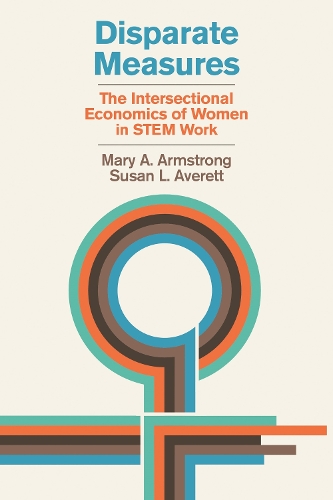
Disparate Measures: The Intersectional Economics of Women in STEM Work
(Hardback)
Publishing Details
Disparate Measures: The Intersectional Economics of Women in STEM Work
By (Author) Mary A. Armstrong
By (author) Susan L. Averett
MIT Press Ltd
MIT Press
7th May 2024
United States
Classifications
General
Non Fiction
331.4
Physical Properties
Hardback
376
Width 152mm, Height 229mm
Description
An exploration of workplace participation and earnings patterns for diverse women in US STEM professions that upends the myth that STEM work benefits women economically. Seen as part economic driver, part social remedy, STEM work is commonly understood to benefit both the US economy and people-particularly women-from underrepresented groups. But what do diverse women find when they work in US STEM occupations What do STEM jobs really deliver-and for whom In Disparate Measures, Mary Armstrong and Susan Averett challenge the conventional wisdom that a diverse US STEM workforce will bring about economic abundance for the women who participate in it. Combining intersectionality theory and critical data theory with a feminist economic analysis, the authors explore how different groups of diverse women truly fare in US STEM professions. Disparate Measures is centered on eight unique, in-depth case studies, each of which provides an intersectional economic analysis (a term coined by the authors) of diverse women working in STEM occupations. Four case studies prioritize women of color and examine the STEM participation and earnings of Black women, American Indian and Alaska Native women, Asian and Pacific Islander women, and Hispanic women/Latinas; four additional case studies illuminate intersections that are frequently neglected by the STEM inclusivity literature- foreign-born women, women with disabilities, Queer women, and mothers. What the authors find in their groundbreaking, detailed analysis is that the promises of STEM are only partly true- when compared to women not working in STEM, most women are indeed economically elevated by STEM occupations-yet when compared to white men in the same STEM occupations, women's second-class status is usually reaffirmed. The authors conclude by offering seven "big-picture" recommendations for rethinking STEM equity, showing just how we can successfully confront the entrenched patterns of economic disadvantage faced by diverse women in STEM jobs.
Author Bio
Mary A. Armstrong is Charles A. Dana Professor of Womens, Gender, and Sexuality Studies and English and Chair of the Womens, Gender, and Sexuality Studies Program at Lafayette College.
Susan L. Averett is Charles A. Dana Professor of Economics at Lafayette College.
